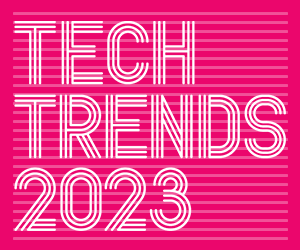The energy sector is under enormous pressure to meet rising demand, both for energy overall and for sustainable sources of energy. Global energy demands are expected to increase 37 percent by 2040, with population growth, smart cities and rising mobile energy needs all contributing to the uptick.
The need for sustainable energy sources in particular is ballooning; the United Nations estimates that for the planet to avoid the worst impacts of climate change, we need to reach net-zero emissions by 2050. In the meantime, the severe weather events triggered by climate change are rough on energy grids, requiring unprecedented maintenance and repairs.
Technology is positioned to help make the energy sector more robust, as current infrastructure cannot handle the expected growth. Renewable energy calls for more complex energy grids, which in turn call for hardware and software equipped to facilitate the energy needs of the near and far future. Here’s how technology can help the industry meet its overall energy needs and rise to the challenge of sustainable power.
DISCOVER: Learn how energy IT solutions and services can help your organization.
Tech Solutions Amplify Energy Possibilities of the Future
Demand response, predictive maintenance and efficiency are the three main areas where technological advances can support the energy sector, Mario Bergés of Carnegie Mellon University told BizTech.
Within those categories, energy leaders have several tools at their disposal. These include:
SMART GRIDS: Digitally enabled grids can help energy companies forecast energy demand, control transmissions more effectively, restore power more quickly after outages and reduce operational costs. They’re also better equipped to handle renewable energy needs, helping energy companies meet their sustainability missions. Power distributors including AES are already partnering with companies such as Google on smart grid virtualization technologies that help clear the path to green energy.
DIGITAL TWINS: Virtual re-creations of physical environments, such as those developed by NVIDIA, let engineers experiment without consequences. By leaning into modeling tools, business intelligence and machine-aided design, digital twins can lead to enhanced processes with fewer interruptions in service.
RELATED: Find out how CDW helps organizations use technology to achieve their sustainability goals.
INTERNET OF THINGS: Connected devices can help energy companies with their chief goals: more efficient delivery and maintenance along with lower operational expenses. IoT supports operational efficiency, including via smart sensors that monitor and adjust pipeline flow. Customers can directly benefit as well, thanks to devices such as energy-efficient thermostats that energy companies can control when necessary.
5G: Within the energy and utilities market alone, 5G technology is expected to grow 36.7 percent annually over the next 10 years. Providers such as Cradlepoint and Verizon can support energy companies with increased automation across smart grids, along with more reliable communication.
Click the banner to learn what tech trends energy and utility leaders are prioritizing now.
Data Can Unlock the Energy Sector’s Potential
In addition to specific technological developments, data analytics is positioned to transform the energy industry.
Data analytics can help energy companies forecast demand. Predictive analytics such as those from Microsoft Power BI and Amazon Forecast help providers understand customer needs and can shape how power can best be delivered. IBM’s Envizi ESG Suite also consolidates environmental, social and governance data that organizations can use to analyze and monitor their progress, while the company’s Planning Analytics Workspace helps with forecasting via automation and modeling.
Data analytics can also support predictive maintenance and energy storage and identify energy-saving opportunities. Advanced data analysis can help companies build better distribution models, according to EPRI’s Q2 2023 report. Heat map visualization can assist engineers in detecting when and where they might be able to save or reduce energy expenditures.
Large-scale AI applications such as those powered by Microsoft Azure give companies insight into all arms of the organization, helping save energy and resources through inventory optimization, power management and equipment maintenance.
With the energy sector facing unprecedented demand, technology is positioned not only to amplify the industry’s possibilities but also to become a champion of sustainable energy — using artificial intelligence to make human capabilities shine.










